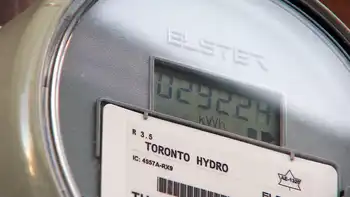Standards for green building vary by organization
By Knoxville News Sentinel
Electrical Testing & Commissioning of Power Systems
Our customized live online or in‑person group training can be delivered to your staff at your location.

- Live Online
- 12 hours Instructor-led
- Group Training Available
The Knoxville company wanted to respond, but, as Moore said, “the last count I had… there were over 210 green programs in this country.”
Like “light” and “organic” before it, “green” has become the new buzzword, tacked onto anything from household cleaners to T-shirts. But putting the green stamp on a house is little more complicated than throwing a few items in your shopping basket or setting out a recycle bin — and much more permanent.
Some state and local governments across the country are mandating a variety of green design and building standards, as well as offering guidelines and certification programs. No such government mandates or programs have yet been adopted in Tennessee.
Instead, local architects, builders and others in the trade are turning to programs offered by the U.S. Green Building Council and the National Home Builders Association to authenticate that their homes are indeed green.
Last fall, the Green Building Council, already well established in the commercial construction industry with its Leadership in Energy and Environmental Design rating system, introduced a LEED designation for homes. As with the commercial program, homes can receive certified, silver, gold and platinum designations based on a points system that addresses energy usage, water control, landscaping, design and other criteria.
The Home Builders Association has developed a similar rating system called the National Green Building Program with bronze, silver and gold designations.
A couple of important differences exist between the LEED and Home Builders programs, said Ron Jones, a Washington builder and editorial director of Green Builder Magazine.
Largely because the National Green Building Program is industry-based, its lowest green certification is “more generous” than the LEED system, Jones said, although at the top end of the ratings, the two programs are “virtually indistinguishable.”
“With LEED, many of the elements you have to satisfy are prerequisites and there is less flexibility in terms of options that you can go to,” he said. “The biggest knock on LEED was the cost… (because the) prerequisites made it necessary to satisfy certain performance levels and access certain kinds of materials that had an impact on the price (of the home).”
For example, Jones said, the LEED system required that only wood products certified by the U.S. Forest Stewardship Council could be used in construction. Because the percentage of products the organization certifies is so small, “it’s virtually impossible for FSC to serve the demand for wood product,” he said.
LEED also put s a penalty on the size of a house, which the National Green Building Program does not.
Home builders also say that the cost of the LEED certification program itself, with accompanying inspections, makes it more prohibitive than the National Green Building Program.
Out of the National Green Building Program came the impetus to create a national standard that would help guide the building industry and serve as a nationally recognized green construction model for communities and states to follow.
Jones chaired a committee comprised of representatives from the building, architectural, supply and government sectors that worked to create a set of recommendations for residential construction standards that were submitted to the American National Standards Institute earlier this year.
The organization is expected to soon issue final certification and publication of the standards. The proposed standards offer bronze, silver, gold and a top emerald rating for home construction as well as multifamily dwellings, renovations and residential developments.
Jones characterized the program as more rigorous than the existing National Green Building Program, but not as rigorous as the LEED system.
He anticipates that the LEED program will still serve as the standard for builders and developers who want to go “deep green,” while many builders will stick with the National Home Builders program because it’s what they know.
“The reason this standard is really important going forward is it provides an unquestionable platform for policy makers to predicate their ordinances or programs off of,” Jones said. The new standard serves as a “bona fide consensus-based document and standard that they can hang their hat on,” he added.
What is now a confusing labyrinth of guidelines and certifications should eventually become standard construction practice, predicts Ray Tonjes, a builder in Austin, Texas, home to the nationÂ’s first municipal green building program, and chairman of the National Association of Home BuildersÂ’ green building subcommittee.
“A lot of us will say, ‘What do you call green building 10 years from now?’ Building,” Tonjes said. “(Green construction) will become the norm.”
At TindellÂ’s Building Materials, Moore sees the local market moving more slowly toward green.
Moore is certified to inspect and verify green construction by the National Home Builders Association, but he’s currently focused on promoting a single aspect of green building — energy efficiency.
Moore is also a certified inspector for Energy Star, the Department of Energy rating system for energy-efficient design, construction, heating and air-conditioning systems, windows, appliances and electronics. Energy Star is a major component of both the National Green Building Program and the LEED rating system.
“The reason we’ve decided that we don’t push the green building as much is really market driven,” Moore said. “We really don’t have any independent builders that are doing green building.”
Much of that is linked to at least the perceived costs of green building, particularly the LEED program, he said, versus the little or no extra costs associated with energy efficient construction.
But Elizabeth Eason, a Knoxville architect and chair of the U.S. Green Building CouncilÂ’s East Tennessee chapter, said green building, even using the LEED rating system, doesnÂ’t have to cost more than traditional construction.
“I would say it’s probably 90 percent design and building practices, and I think that’s why a lot of contractors are very interested in it,” she said. “They want to be the best at what they’re doing.”











